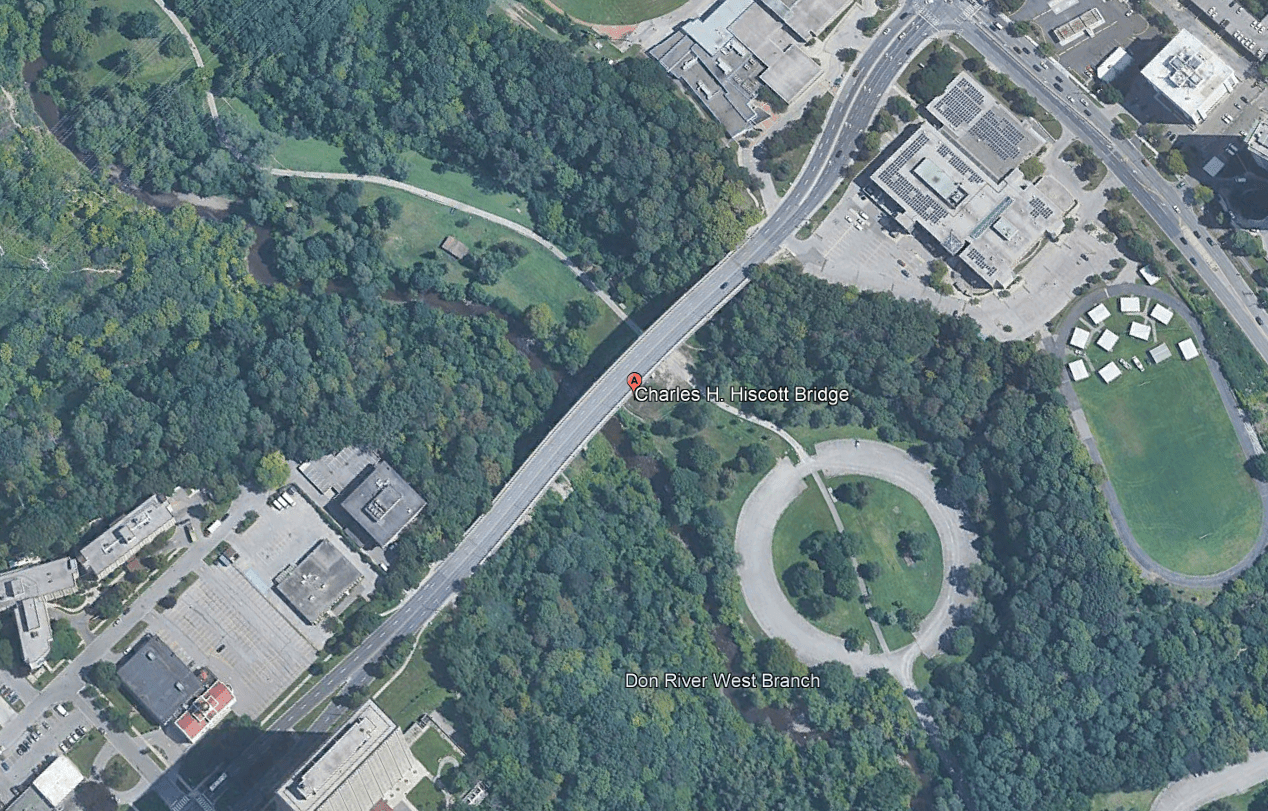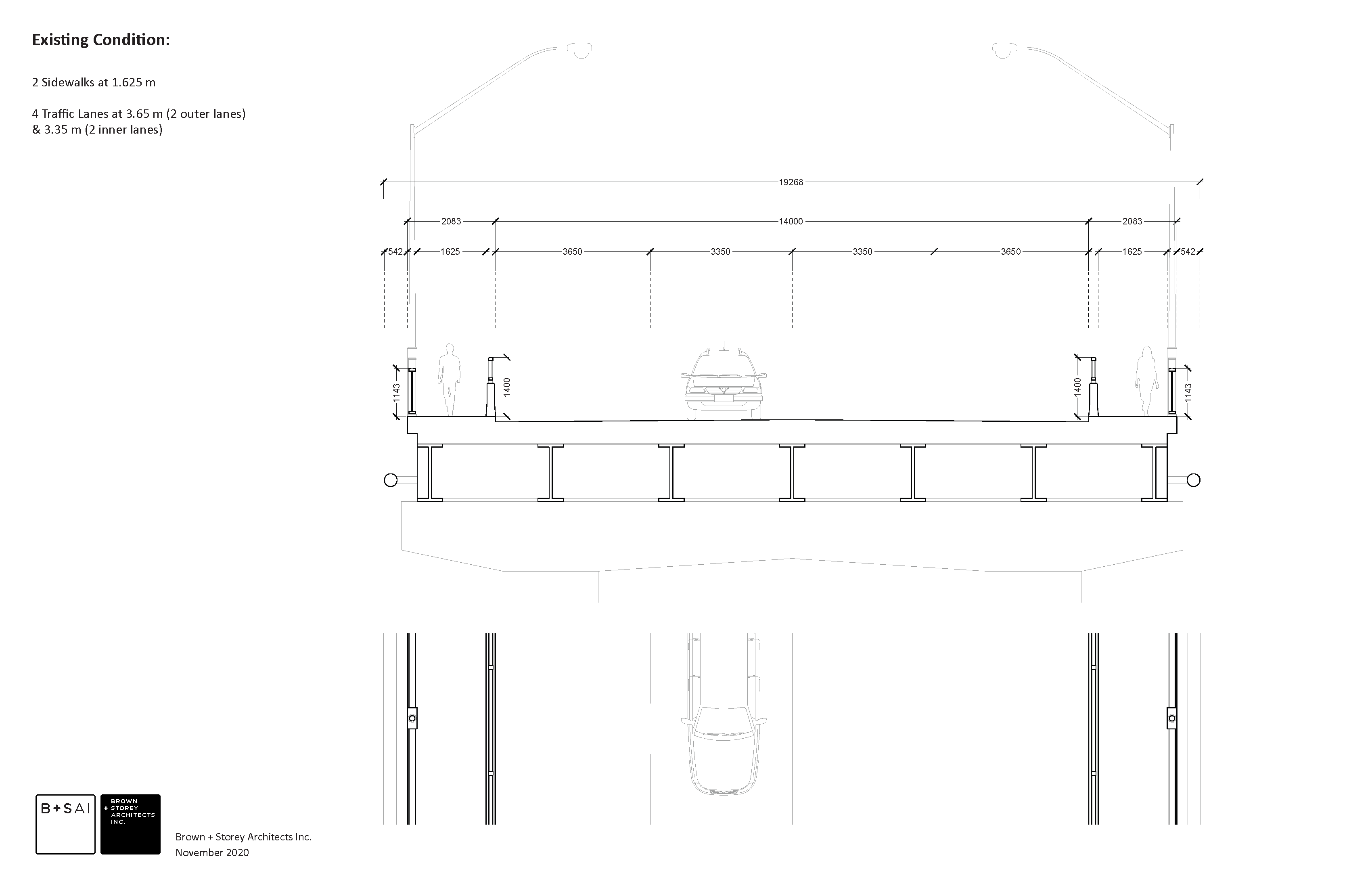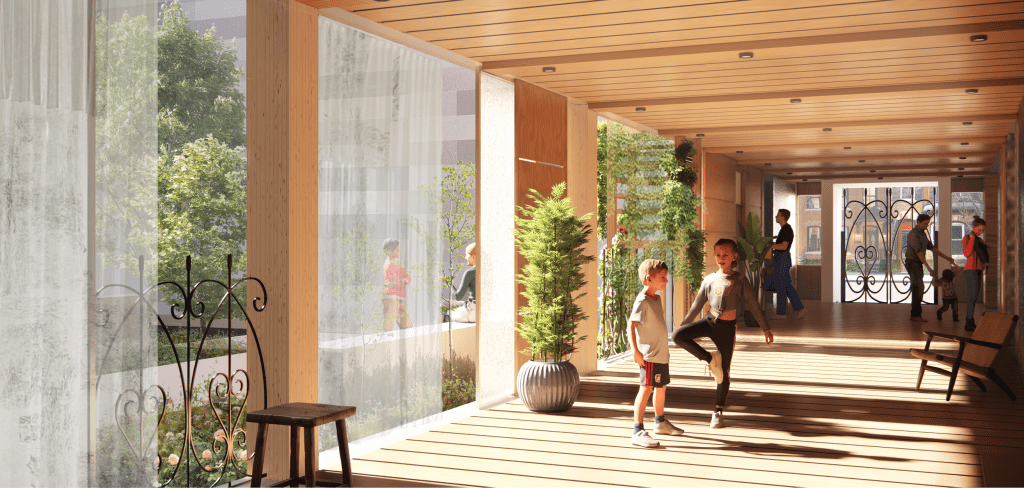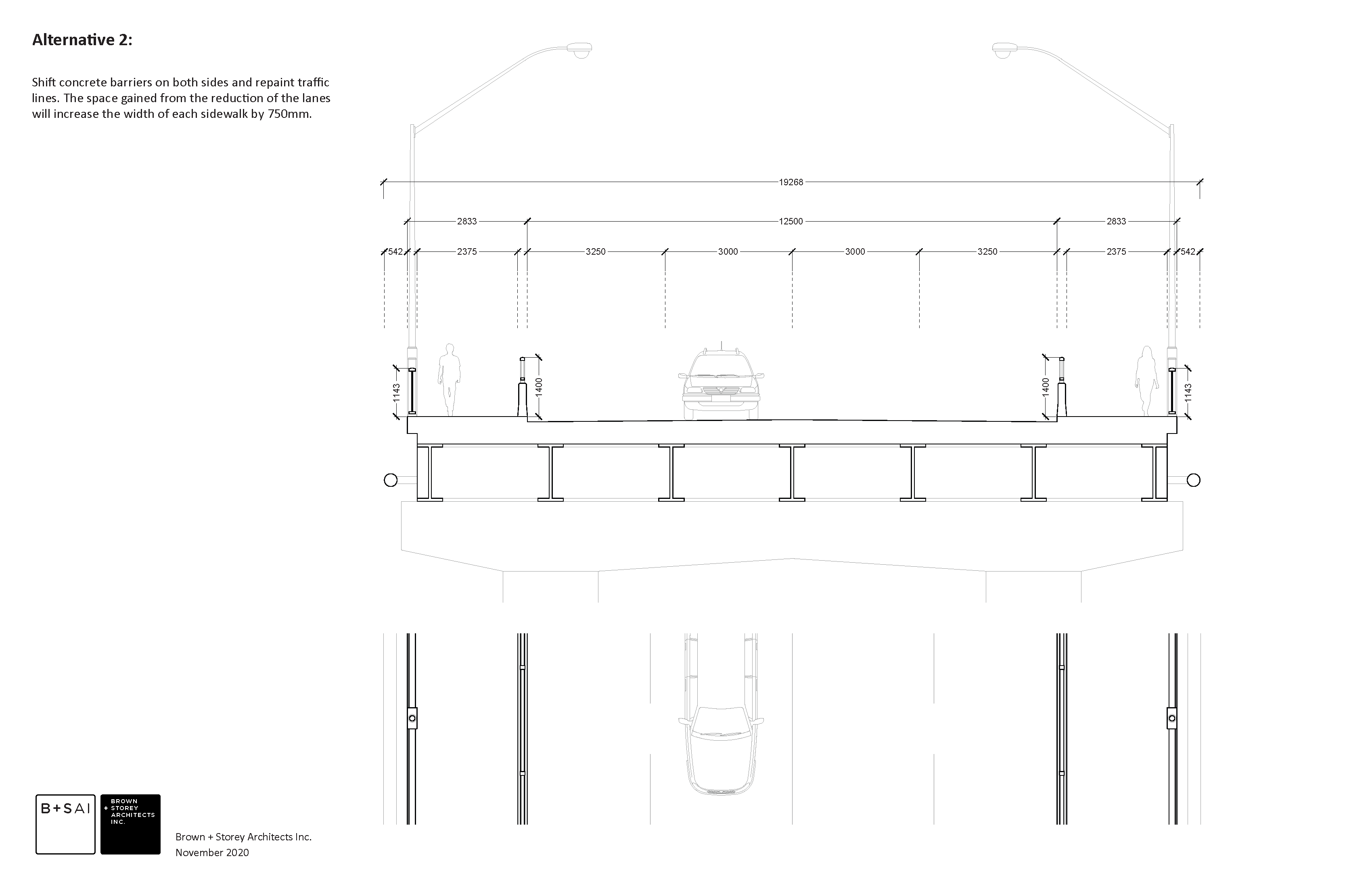Pedestrian Safety Solutions for the Charles H. Hiscott Bridge

The current state of Charles H. Hiscott Bridge, with four lanes of traffic and two very narrow sidewalks less than the city standard width of 2.1m, is dangerous and leaves no room for social distancing. Reports notwithstanding from transportation departments and recent reports from city councilors explain that it is not possible to remove two lanes of traffic on the bridge, leaving a seemingly unsolvable situation.
The communities at Thorncliffe Park and the adjacent school boards use the bridge’s narrow sidewalks daily, and have pressured for them to be widened to accommodate social distancing standards and create a safer, more pleasant experience for pedestrians. The physical space of the road is bounded by parallel modular pre-cast concrete barriers. These barriers are not fixed, instead being placed on the curb reducing pedestrian space. Because the barriers encroach into the already limited sidewalk space, pedestrians are usually forced to walk in single file between them and the bridge fences.

Pedestrian Safety Improvements
Our solution to this situation is to shift the concrete barriers and reduce the existing lane widths from their current 3.35/3.65 meters to 3.0 meters. By reducing the width of the vehicle lane to 3 meters, there is a net difference of 1.5 meters. This resulting space can either be divided equally between the two sidewalks, creating sufficient walking space, or concentrated on just one sidewalk to allow adequate space for social distancing. In either case, the work does not require the removal of traffic lanes and their realignment could be quickly implement by shifting the concrete barriers.
The 3.0 m wide new traffic lanes are typical of high-volume streets in Toronto such as Bloor Street between University Avenue and Parliament Street. The reduce traffic lane width in turn creates a new traffic speed of 40km/h which would improve efficiency without reducing the total travel time across the bridge. This solution is simple and easy to implement, providing the pedestrian space which is so urgently needed.



